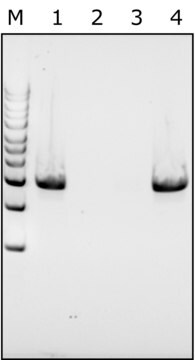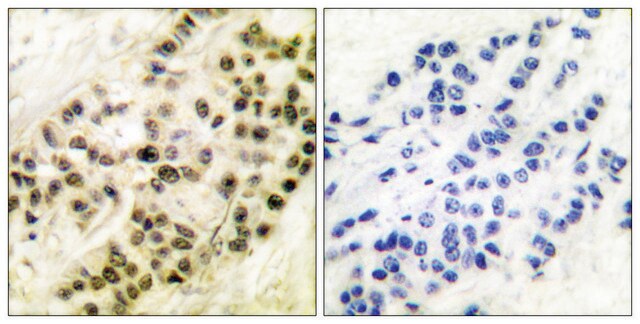L7386
Lysostaphin aus Staphylococcus staphylolyticus
≥500 units/mg protein, lyophilized powder
Synonym(e):
Glycyl-glycine Endopeptidase
About This Item
Empfohlene Produkte
product name
Lysostaphin aus Staphylococcus staphylolyticus, lyophilized powder, Protein 50-70 % by biuret, ≥500 units/mg protein
Biologische Quelle
microbial (Staphylococcus staphylotyticus)
Qualitätsniveau
Form
lyophilized powder
Spezifische Aktivität
≥500 units/mg protein
Mol-Gew.
25 kDa
Zusammensetzung
Protein, 50-70% biuret
Verpackung
pkg of (sold on basis of mg protein)
Löslichkeit
water: 2.00-2.10 mg/mL, clear to slightly hazy, colorless to light yellow
Wirkungsspektrum von Antibiotika
Gram-positive bacteria
Anwendung(en)
diagnostic assay manufacturing
diagnostic assay manufacturing
Wirkungsweise
cell wall synthesis | interferes
Versandbedingung
wet ice
Lagertemp.
−20°C
Suchen Sie nach ähnlichen Produkten? Aufrufen Leitfaden zum Produktvergleich
Allgemeine Beschreibung
Biochem./physiol. Wirkung
Optimaler pH-Wert für Aktivität: ~7,5
Einheitendefinition
Signalwort
Danger
H-Sätze
Gefahreneinstufungen
Resp. Sens. 1
Lagerklassenschlüssel
11 - Combustible Solids
WGK
WGK 3
Flammpunkt (°F)
Not applicable
Flammpunkt (°C)
Not applicable
Persönliche Schutzausrüstung
Eyeshields, Gloves, type N95 (US)
Analysenzertifikate (COA)
Suchen Sie nach Analysenzertifikate (COA), indem Sie die Lot-/Chargennummer des Produkts eingeben. Lot- und Chargennummern sind auf dem Produktetikett hinter den Wörtern ‘Lot’ oder ‘Batch’ (Lot oder Charge) zu finden.
Besitzen Sie dieses Produkt bereits?
In der Dokumentenbibliothek finden Sie die Dokumentation zu den Produkten, die Sie kürzlich erworben haben.
Kunden haben sich ebenfalls angesehen
Protokolle
GenElute™ Bacterial Genomic DNA Kit protocol describes a simple and convenient way for the isolation of pure genomic DNA from bacteria.
Das Protokoll für das GenElute™-Kit für bakterielle genomische DNA beschreibt eine einfache und praktische Möglichkeit für die Isolation von reiner genomischer DNA aus Bakterien.
Unser Team von Wissenschaftlern verfügt über Erfahrung in allen Forschungsbereichen einschließlich Life Science, Materialwissenschaften, chemischer Synthese, Chromatographie, Analytik und vielen mehr..
Setzen Sie sich mit dem technischen Dienst in Verbindung.













